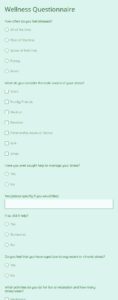The rapid advancement of technology has enabled many businesses to adopt remote work arrangements, and the IT department plays a crucial role in ensuring the successful implementation and management of a work from home (WFH) policy. Whether you’re a small startup or a large enterprise, having a comprehensive work from home IT policy template in place is essential to guide employees, protect company assets, and maintain productivity. Creating a WFH policy requires careful consideration of various aspects, including security, equipment, communication, and employee well-being. In this guide, we’ll provide a comprehensive work from home IT policy template that you can adapt to suit your organization’s specific needs.
A well-defined WFH policy sets clear expectations and provides a framework for employees to work remotely effectively. It establishes guidelines for secure remote access, data protection, and communication, ensuring that employees can perform their duties while maintaining the integrity of company information. Additionally, a WFH policy addresses issues related to equipment, reimbursement, and employee support, promoting a productive and comfortable work environment. By implementing a comprehensive WFH policy, organizations can foster a positive and flexible work culture that supports employee well-being and drives business success.
Eligibility and Requirements
Employees must meet certain eligibility criteria to work from home. This typically includes having a dedicated workspace, reliable internet connectivity, and the necessary hardware and software. Managers should assess each employee’s suitability for remote work based on their role, performance, and ability to maintain productivity outside the traditional office environment.
When defining eligibility requirements, consider the following:
- Job responsibilities: Determine which roles are suitable for remote work, considering tasks, collaboration needs, and access to sensitive information.
- Performance history: Evaluate employees’ past performance, reliability, and ability to meet deadlines to ensure they can effectively manage their time and responsibilities while working remotely.
- Technical skills: Assess employees’ proficiency in using technology and their ability to troubleshoot common IT issues.
- Work-life balance: Consider employees’ personal circumstances, such as family obligations or other commitments, that may impact their ability to work effectively from home.
Security and Data Protection
Protecting company data and ensuring the security of remote work environments are paramount. The work from home IT policy template should outline measures to safeguard sensitive information and prevent unauthorized access.
Key considerations for security and data protection include:
- Secure remote access: Implement secure remote access solutions, such as virtual private networks (VPNs), to ensure encrypted connections between employees’ devices and the company network.
- Data encryption: Require employees to encrypt sensitive data on their devices and during transmission to protect against unauthorized access.
- Password management: Establish strong password policies and require employees to use complex, unique passwords for all work-related accounts.
- Regular security updates: Ensure that all devices used for remote work are regularly updated with the latest security patches and software updates.
- Data backup and recovery: Implement a comprehensive data backup and recovery plan to protect against data loss or corruption.
Conclusion
A comprehensive work from home IT policy template serves as a valuable resource for organizations looking to establish a successful remote work program. By clearly defining eligibility requirements, outlining security measures, and providing guidelines for communication, equipment, and employee support, businesses can create a supportive and productive environment for employees to work from home. This policy not only ensures the protection of company assets and data but also promotes employee well-being and job satisfaction.
With the increasing demand for flexible work arrangements, implementing a robust WFH policy has become essential for organizations to stay competitive and attract top talent. By embracing remote work and providing employees with the necessary tools and support, businesses can unlock new opportunities for growth and innovation.
FAQ
What is the purpose of a work from home IT policy template?
A work from home IT policy template provides a framework for organizations to establish guidelines and expectations for employees working remotely. It addresses issues related to security, data protection, equipment, communication, and employee well-being, ensuring a productive and secure remote work environment.
What are the key elements of a work from home IT policy template?
Key elements of a work from home IT policy template include eligibility requirements, security measures, guidelines for communication and collaboration, equipment and reimbursement policies, and employee support.
How can I ensure the security of my company’s data when employees are working from home?
To ensure data security, organizations should implement secure remote access solutions, require employees to encrypt sensitive data, establish strong password policies, regularly update devices with security patches, and implement a comprehensive data backup and recovery plan.
What are the best practices for communication and collaboration in a remote work environment?
Effective communication and collaboration in a remote work environment involve utilizing a combination of tools and strategies. This includes using video conferencing, instant messaging, and project management software, as well as establishing clear communication channels and expectations.
How can I support the well-being and productivity of remote workers?
Supporting remote workers’ well-being and productivity involves providing them with the necessary equipment and resources, establishing clear expectations and goals, promoting regular communication, and encouraging work-life balance. Additionally, organizations can offer wellness programs and support services to ensure employees’ mental and physical health.
